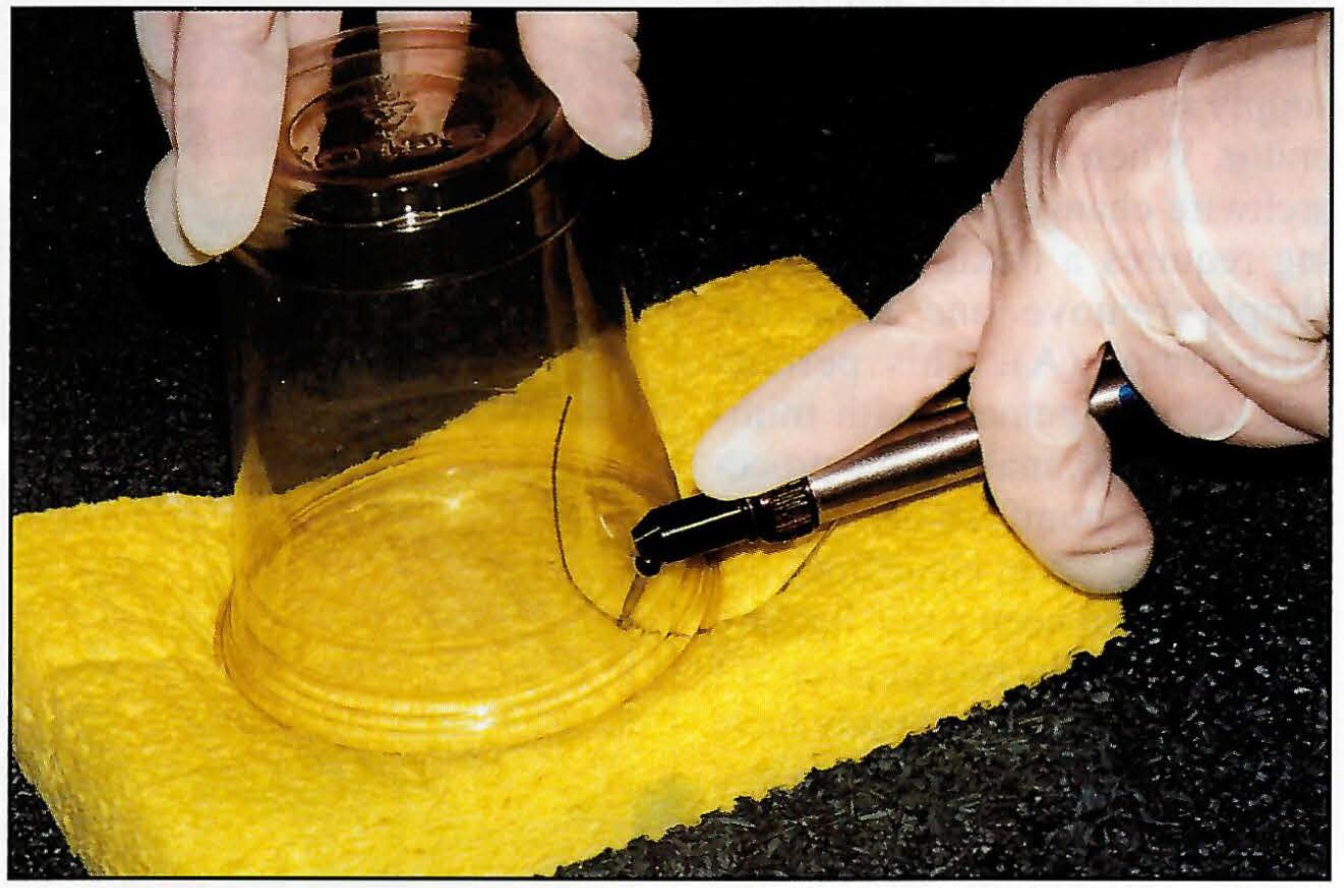When a Microetcher* is used to prepare the bonding pad of a debonded bracket prior to its replacement in the mouth, the aluminum oxide powder is messy and difficult to control. Several vacuum chambers are commercially available, but I have been disappointed with their bulk and cost, and they make infection control a challenge.
Instead, I use a clear, disposable 7oz plastic cup as a hood and a household sponge as a filter (Fig. 1). A hole just large enough for the Microetcher nozzle is drilled into the side of the cup, about an inch from the rim. The cup is turned upside down on a damp sponge for microetching.
This method works best if the bracket is microetched while still attached to the archwire, eliminating the need for a plier and minimizing powder escape. It also works, however, if the bracket is held with a college plier.
The Microetcher nozzle is inserted through the hole in the upside down cup, and the bracket is held close to the nozzle. A little pressure should be applied to the cup while microetching to compress it into the sponge. The cup and sponge can be disinfected after each use or simply discarded.
Similar articles from the archive:
- CLINICAL AID Modified Amalgam Plugger for Etchant Application November 2005
- The Role of Acid Etching in Rebonding January 1979
- TECHNIQUE CLINIC Bonding to Fractured Anterior Teeth April 1997

FOOTNOTES
- *Danville Engineering, 1901 San Ramon Valley Blvd., San Ramon, CA 94583.


